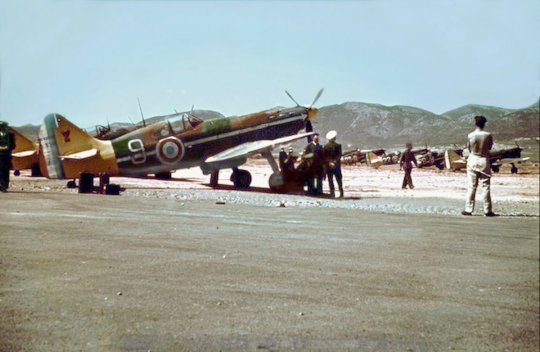Photo

Kittyhawk Mark III fighter with the RAF 112 Squadron taxiing at Medenine, Tunisia, May 1943. The crewman on the wing is helping guide the pilot whose view is obscured by the aircraft’s raised nose. https://wrhstol.com/2CbFtoZ
102 notes
·
View notes
Photo

A couple of crewmen deicing ‘A’ turret aboard a King George V-class battleship while running the Arctic Convoys to Russia during World War 2. Churchill deemed these cruises to be “the worst journey in the world”.
854 notes
·
View notes
Text

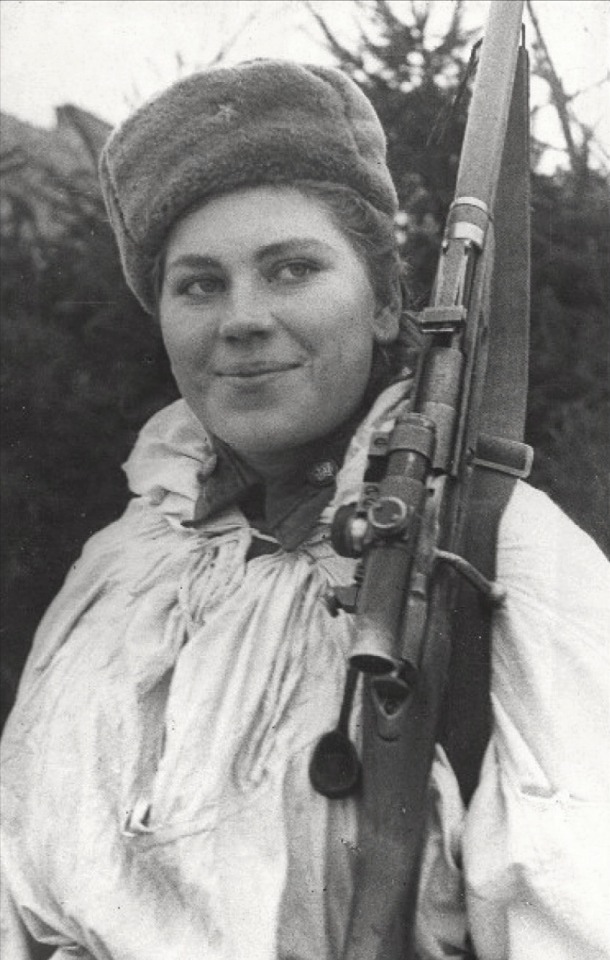



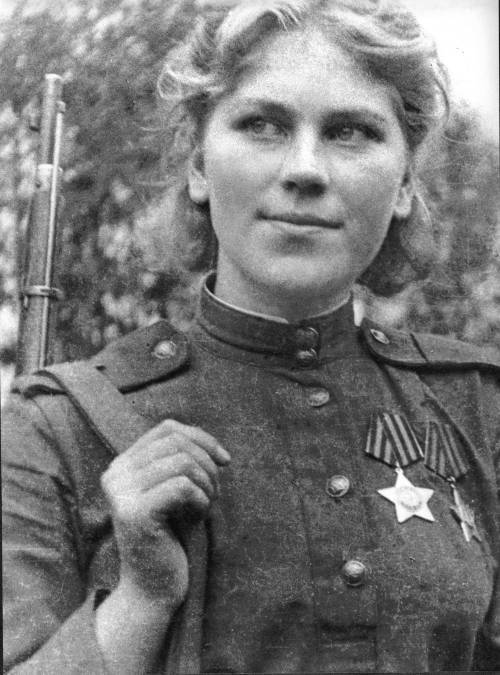




Roza Shanina (1924-1945).
Soviet sniper.
.
She was credited with fifty-nine confirmed kills, including twelve soldiers during the Battle of Vilnius. Shanina volunteered for the military after the death of her brother in 1941 and chose to be a marksman on the front line. Praised for her shooting accuracy, Shanina was capable of precisely hitting enemy personnel and making doublets (two target hits by two rounds fired in quick succession).
She was one of the first women to join the Soviet army during World War II and was the first Soviet female sniper to be awarded the Order of Glory, also becoming the first servicewoman of the 3rd Belorussian Front to receive it.
.
Roza was above average height, with light brown hair and blue eyes, and spoke in a Northern Russian dialect. After finishing four classes of elementary school in Yedma, Shanina continued her education in the village of Bereznik. As there was no school transport at the time, when she was in grades five through seven Roza had to walk 13 kilometres (8.1 mi) to Bereznik to attend middle school.
At the age of fourteen, Shanina, against her parents' wishes, walked 200 kilometres (120 mi) across the taiga to the rail station and travelled to Arkhangelsk to study at the college there.
.
Her childhood was deeply impacted by the events of the war, during which she lost three of her five brothers. She volunteered and enrolled at the ‘Central Women’s Sniper Training School,’ from where she graduated with honors. She joined the ‘184th Rifle Division’ and was appointed as the commander of a newly raised special female-sniper platoon.
.
Shanina was killed in action during the East Prussian Offensive while shielding the severely wounded commander of an artillery unit. Shanina's bravery received praise already during her lifetime, but conflicted with the Soviet policy of sparing snipers from heavy battles. Her combat diary was first published in 1965.
.
Shanina had a straightforward character and valued courage and the absence of egotism in people. She was described as a person of unusual will with a genuine, bright nature by war correspondent Pyotr Molchanov.
938 notes
·
View notes
Photo

USS Salt Lake City (CA-25) near Mare Island Naval Shipyard on June 21, 1944. She is painted in Measure 32/14D.
Note: turret No. 1 has two cannons and No. 2 has three. This is due to the narrow hull of the Pensacola class, and along with heavy tripods, caused excessive rolling. Leading to her nickname “Swayback Maru” or “Old Swayback”.
She received 11 battle stars for her service in World War II.
19-N-67713
61 notes
·
View notes
Photo

The British submarine HMS Saracen (P247) returns to the Harbor after new successes in the Mediterranean sea. From 22 to 24 February 1943. From the IWM a14983 collection.
During her first patrol, HMS Saracen (Lt. M. G. R. Lumby, RN) torpedoed and sank the German submarine U-335 (built in 1941) in the North sea northeast of the Faroe Islands at position 62°48N, 00°12W. on 9 November 1942
HMS Saracen (Lt. MGR Lumby, DSC, RN) torpedoed and sank the Italian submarine Granito (630 tons, built in 1942) about 40 nautical miles Northwest of Capo San Vito, Sicily, Italy, at 38 ° 34 ‘N, 12 ° 09'E. The submarine also sank a number of commercial Italian, German and French vessels.
On 14 August 1943, while patrolling off the coast of Bastia, HMS Saracen was sighted by the Italian corvettes Minerva and Euterpe, which attacked her with depth charges. She was forced to surface, and when the crew abandoned her, they sank the boat to avoid her capture. All but two of the crew survived and were captured; some were released a few weeks later when Italy switched sides, others, for example, survived the rest of the war in German pow camps.
Colour: Alex Colors Studio
50 notes
·
View notes
Photo
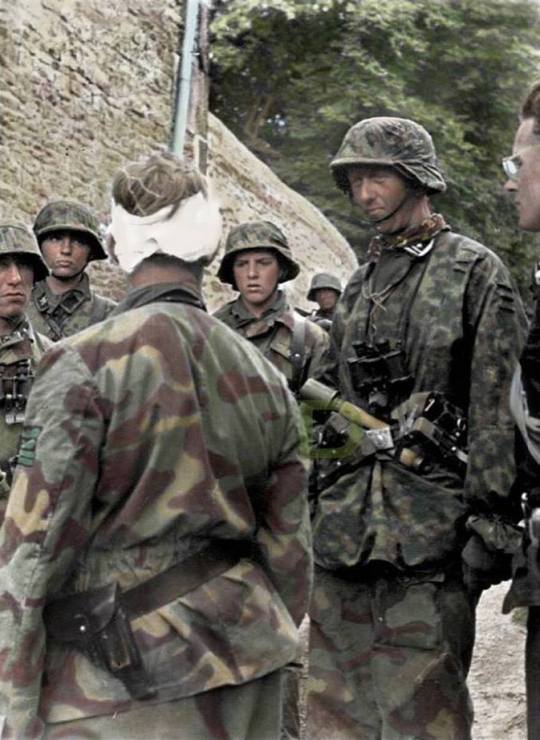

SS Retreat
#1 SS-Obersturmbannführer Max Wünsche (with the bandaged head), Rgt. Komm. of SS-PzRgt 12 visiting survivors of III.ZUG 15./25 SS PzG. Rgt. at Rots, Normandy on June 9, 1944.
#2 SS-Sturmann Otto Funk also at Rots
Partly seen on the right side of image #1 is SS-Hauptsturmführer Rudolf von Ribbentrop, 3. Kompanie, I./SS-PzRgt 12, son of German foreign minister von Ribbentrop.
On the left is thought to be Unterscharführer Peter Koslowski on the far right is Hauptscharführer Wilhelm Boigk, that is SS-Sturmmann Otto Funk at the back but #2 and #4 are unknown.
At around 0900 hours on the morning of 9 June, the 3rd Company of SS-Panzer-Regiment 12 rumbled through Rots towards la Villeneuve on the Caen-Bayeux highway. They were ordered to assault Norrey with the support of a small number of infantry from SS-Panzergrenadier-Regiment 25.
The attack was to be in conjunction with infantry attack from the I Battalion of SS-Panzergrenadier-Regiment 26 south of the village.
Just after noon on 9 June, Twelve Panthers fanned out in a single line at a right angle to the rail embankment. Approaching the village the company swung left keeping in a solid line with their fronts towards the village in anticipation of confronting the Canadian anti-tank guns.
Nine Sherman tanks from the 1st Hussars including several “Fireflys” equipped with 17 pdrs, were moving towards the front to reinforce the Reginas’ position in Norrey. The majority of the Sherman tanks were navigating through the village, but one Firefly, commanded by Lt G. K. Henry, had worked his way around the village to the front where he spotted the advancing Panthers. Catastrophically for the 3rd Panzerkompanie, their swing to the left, though protecting them from the 6-pounders in Norrey, exposed their flanks to Lt Henry at not more than 1000 metres distance. The Canadian tank opened fire hitting the tank nearest the rail-line first. Lt Henry fired five shots and knocked out five Panthers. A sixth was accounted for by another “C” squadron tank.
The crews from the burning Panthers along with their supporting infantry retreated back to an underpass where Canadian artillery began to pound the area inflicting even more casualties.
Max Wünsche died 1995 aged 80
Rudolf von Ribbentrop born 1921 - still alive aged 94
Wilhelm Boigk KIA July 4 1944
Otto Funk died 2011 aged 85
(Colorised by David W. Stradal and Doug)
137 notes
·
View notes
Photo




Allied troops landing on Normandy.
D-Day, 1944.
302 notes
·
View notes
Photo

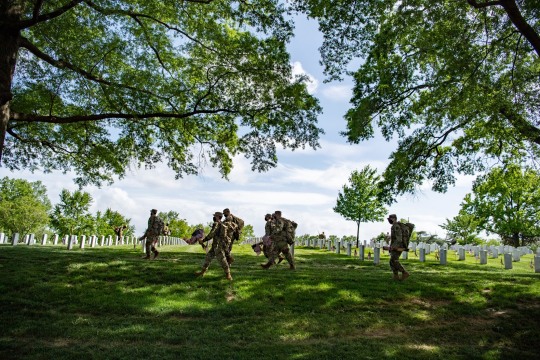




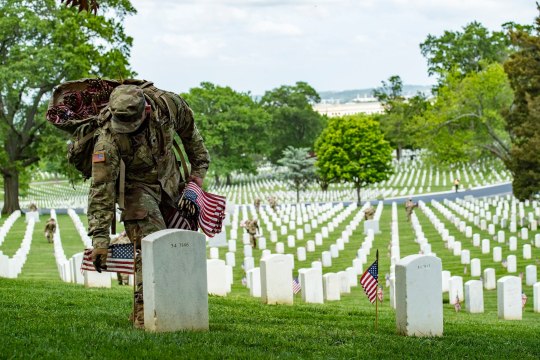
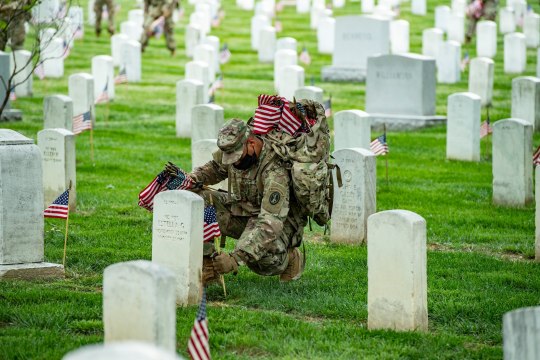


Earlier today, soldiers from the 3d U.S. Infantry Regiment (The Old Guard) placed U.S. flags at headstones as part of Flags-In at Arlington National Cemetery, Arlington, Virginia, May 21, 2020. For more than 50 years, soldiers from The Old Guard have honored our nation’s fallen military heroes by placing U.S. flags at gravesites of service members buried at both Arlington National Cemetery and the U.S. Soldiers’ and Airmen’s Home National Cemetery just prior to the Memorial Day weekend. Over 1,000 soldiers place more than 250,000 flags in front of every headstone, and columbarium and niche wall column.
4K notes
·
View notes
Photo



The extremely complex suspension system design of the Tiger I heavy tank, consisting of four rows of overlapped and interleaved road wheels, three per axle, two doubles and a single:

It provided a smooth ride for the tank, alongside an improved accuracy, reduced wear and tear of the tank, provided extra protection for the sides of the hull, allowed continuous operation even after the loss of varios road wheels, and allegedly even improved fuel consumption, but it came with the cost of being a maintenance nightmare, as the replacement of any of the internal road wheels could mean the removal of up to 8 of them:

not to mention problems given by mud getting into the system, which could leave the entire tank stuck, either by accumulation or freezing in the harsh soviet climate, forcing the tank’s crew to manually remove it.

Later in the war, the Tiger I got a new suspension system, similar to that found on her successor, the Tiger II, which while still overlapping, it greatly simplified the layout, reducing it to just four road wheels per axle, installed in pairs.

This suspension system was almost exclusively used by the Germans, where it was known as Schachtellaufwerk, and after the war no other nation has used it since, as it’s drawbacks far surpassed its benefits.
922 notes
·
View notes
Photo

“The U.S. Navy troop transport USS West Point (AP-23) steams past the Statue of Liberty, bound for the New York City docks, while transporting troops home from Europe, 11 July 1945. Banners hanging from her superstructure identify the following U.S. Army units (from left to right): Fifth Corps; 347th Infantry Regiment; and 87th Infantry Division. Note West Point’s pattern camouflage.”
Source
93 notes
·
View notes
Photo

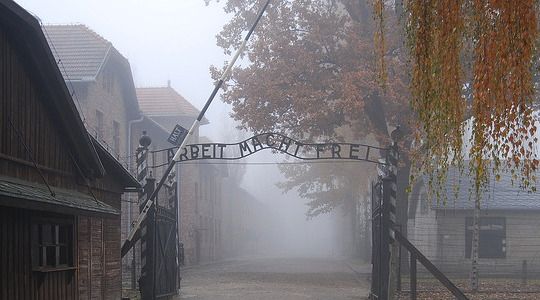
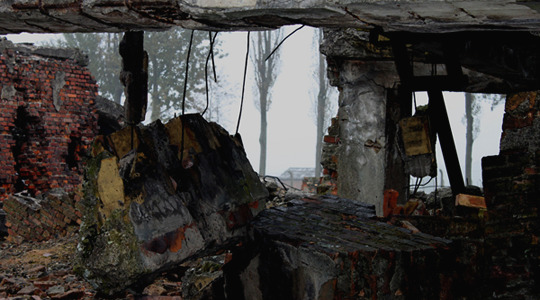
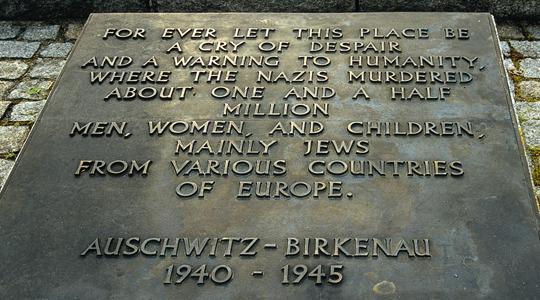
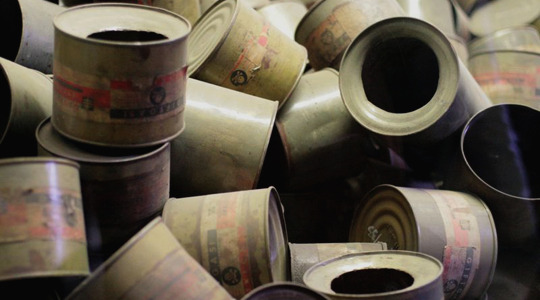
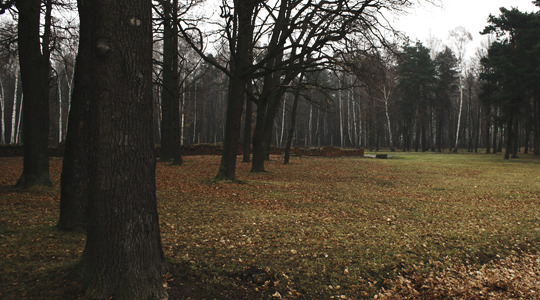

27 January, 1945 | The liberation of Auschwitz
Never shall I forget that smoke. … Never shall I forget those flames that consumed my faith forever. Never shall I forget the nocturnal silence that deprived me for all eternity of the desire to live. Never shall I forget those moments that murdered my God and my soul and turned my dreams to ashes. Never shall I forget these things, even if I were condemned to live as long as God himself.
Never.
Elie Wiesel, Night
–
All the Dachaus must remain standing. The Dachaus, the Belsens, the Buchenwalds, the Auschwitzes—all of them. They must remain standing because they are a monument to a moment in time when some men decided to turn the earth into a graveyard. Into it they shoveled all of their reason, their logic, their knowledge, but worst of all, their conscience, and the moment we forget this, the moment we cease to be haunted by its remembrance, then we become the gravediggers. Something to dwell on and remember…
Rod Serling, The Twilight Zone, “Deaths-Head Revisited”
When Soviet troops arrived at the Auschwitz concentration camp on the 27th of January, 1945, they found roughly 7,500 living prisoners–most of whom were weak, ill, and starving–and hundreds of corpses. Though the camp remained largely in tact, the retreating S.S. had demolished several buildings, including the gas chambers, in an attempt to hide their crimes. Overall, an estimated 1.1 million people were murdered in Auschwitz between 1940 and 1945, making it the most deadly of all the Nazi concentration and extermination camps. The majority of the victims were Jews.
Auschwitz-Birkenau became a museum in 1947, and the UN appointed January 27th as International Holocaust Remembrance Day. Seventy years after its liberation, Auschwitz remains the dominant symbol of the Holocaust
9K notes
·
View notes
Photo




Slave laborers at the Dora Concentration Camp building V2 rockets for Wernher Von Braun. More: http://www.dora.uah.edu/slavelabor.html
261 notes
·
View notes
Photo

The crew of B-17G Fortress “I’ll Get By” arrive at their airplane by Jeep ay RAF Horham, Suffolk, England, 1944. https://wrhstol.com/2vnOHek
406 notes
·
View notes
Photo






The Dunkerque evacuation was the evacuation of Allied soldiers from the beaches and harbour of Dunkerque (Dunkirk), between 26 May and 4 June 1940, during the Battle of France.
By the end of the eighth day, a total of 338,226 soldiers had been rescued by a hastily assembled fleet of over 800 boats of merchant marine boats, fishing boats, pleasure craft, and lifeboats called into service for the emergency. The British Expeditionary Force lost 68,000 soldiers during the French campaign and had to abandon nearly all of their tanks, vehicles, and other equipment (enought to equip about eight to ten divisions).
Between 30,000 and 40,000 men were left behind and forced to surrender to the Germans.
509 notes
·
View notes
Photo
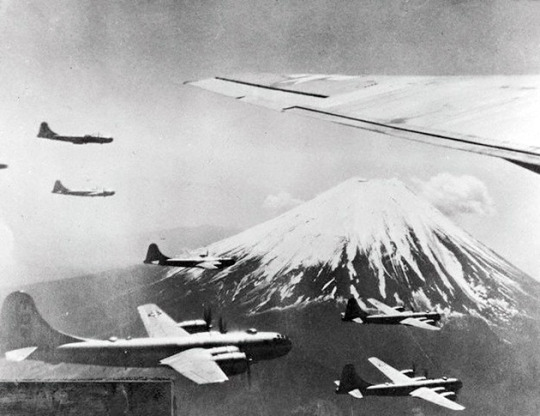


March 9th 1945: Bombing of Tokyo begins
On this day in 1945, the bombing of Tokyo by the United States Air Forces began. There had been raids by B-29 bombers since November 1944, but this was one of the most destructive in history. The raid on the night of March 9th saw 334 B-29s take off in Operation Meetinghouse, with 279 of them dropping around 1,700 tons of bombs. 16 square miles of the Japanese capital were destroyed, around a million were left homeless and around 100,000 people died as a result of the firestorm. Tokyo saw many raids such as this, with over 50% of Tokyo being destroyed by the end of the Second World War. However the firebombing on the night of March 9/10th was the single deadliest air raid of the war; the immediate deaths were higher than seen at Dresden, Hiroshima or Nagasaki as single events.
“Killing Japanese didn’t bother me very much at that time… I suppose if I had lost the war, I would have been tried as a war criminal…. Every soldier thinks something of the moral aspects of what he is doing. But all war is immoral and if you let that bother you, you’re not a good soldier.“
- Curtis LeMay, the American general behind the firebombing campaign
552 notes
·
View notes
